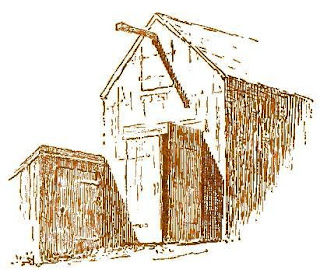In the history of mathematics, the prime numbers are ancient as the invention of the natural numbers. To review a little, the natural numbers are the simple positive integers 1, 2, 3, ... —a series without end.
In this series of the natural numbers, when we are given some number, it is easy to tell what the next number is; just add 1 to the given number! (This explains why it is funny to ask elementary school kids for the biggest number he/she can think about, and then confront his answer by telling him/her to add 1 to the number he mentioned.)
On the other hand, the prime numbers are not so easy to visualize; their distribution is as if they were randomly distributed.
 |
| Statue of Euclid. |
Let's review for a moment the standard definition of a prime number:
a prime number is a natural number which has exactly two distinct natural number divisors: 1 and itself. For example, the primes less than 100 are:
2, 3, 5, 7, 11, 13, 17, 19, 23, 29, 31, 37, 41, 43, 47, 53, 59, 61, 67, 71, 73, 79, 83, 89, 97
The number 1 is by definition not a prime number. Note how unusual is the beginning of this series: the first prime is even --the only even number that is prime; all the other following primes are odd. But not every odd number is prime. To the number 3 follows 5; to 5 follows 7, but to 7 does not follow the number 9.
The simple task of finding the prime number that follows another prime impossible. With the prime numbers it happens that given any prime number, there is no way to compute the next prime that follows—or precede—the given one.
However, the primes are very special in one aspect: every natural number is either a prime or it is the product of some primes. This is a far-reaching assertion because it surreptitiously states that the natural numbers are in one way or another all made of prime numbers.
Euclid (ca. 300 BC), and
Eratosthenes (ca. 200 BC) were the first two Greek mathematicians to work extensively with the properties of the prime numbers. Euclid proved that the primes were infinite (no way to find the last prime), and Eratosthenes devised a method to sieve out the primes from the series of the natural numbers.
Since then, the primes numbers are a constant headache for number theorists and mathematicians in general.
Historical Quotations About Prime Numbers
However, mathematics is not a private property of mathematicians and philosophers of science. What about the public? They also have something to say. What does the layman have to say about the prime numbers? Do politicians have something to add to this arduous field of mathematics (they always have something to say!)?
Let's see how some imaginary examples of how some famous people would have reasoned about if the number 9 is prime or not.
Christopher Columbus: “3 is prime, 5 is prime, 7 is prime. According to some ancient manuscripts, 9 is not a prime number, but beyond the distant horizon of the oceans, in the New World that I am going to discover, there are surely lots of them.”
Dimitri Mendeleev: “3 is a prime, 5 is a prime, and 7 is a prime, but 9 is a noble prime that deserves a separate row in the periodic table of the primes.”
Charlie Chaplin: “3 is a prime, 5 is a prime, 7 is a prime, 9 is the next prime after 8.”
John F. Kennedy: “1 is not a prime number and 9 is not a prime number? Then ask not what the primes can do for you, ask what you can do for the primes.”
Stephen Hawking: “2, 3, 5 and 7 are prime numbers: 9 is not prime, but in the black holes, past beyond the event horizon, anything can happen.”
George W. Bush: “3 is prime, 5 is prime, 7 is prime, and 9 … well, any odd number can be prime as long as it is not 9.”
For more examples about how easily is to be misled when reasoning about the series of the prime numbers, then see the article:
Historical Quotations About Prime Numbers






















